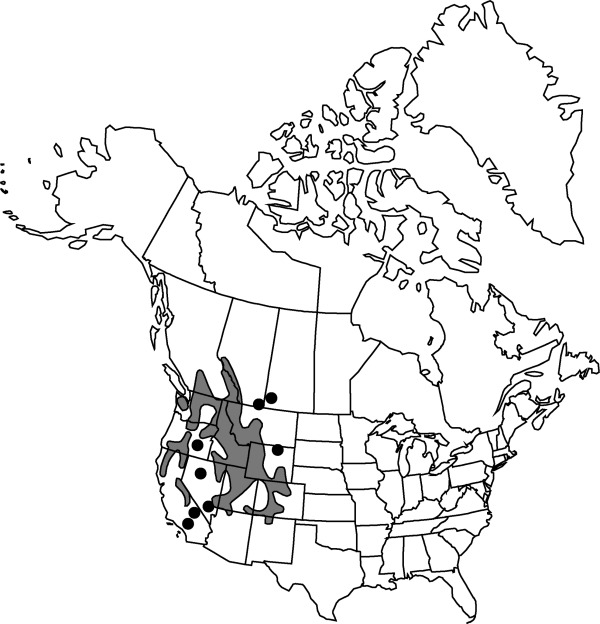Claytonia lanceolata
Fl. Amer. Sept. 1: 175, plate 3. 1814.
Plants perennial, with globose tubers 5–20 mm diam.; periderm 1–5 mm. Stems 1–10 cm. Leaves: basal leaves 1–6, often absent at flowering, blade linear to lanceolate, 5–40 × 0.2–1.6 cm; cauline leaves sessile, blade ovate to narrowly lanceolate, 1–6 × 0.5–2 cm. Inflorescences 1-bracteate (rarely with 2 bracts). Flowers 8–14 mm diam.; sepals 4–6 mm; petals white to pink, rose, magenta, yellow, or deep orange, 5–20 mm; ovules 6. Seeds 2–2.5 mm diam., shiny and smooth; elaiosome 1–2 mm. 2n = 12, 16, 24, 32, 36, 44, 48, 52, 64, 74, ca. 90.
Phenology: Flowering Apr–Jul.
Habitat: Sagebrush and montane foothills to alpine areas, particularly where snow persists
Elevation: 500-3000 m
Distribution

Alta., B.C., Sask., Ariz., Calif., Colo., Idaho, Mont., Nev., N.Mex., Oreg., Utah, Wash., Wyo.
Discussion
Some differences of opinion exist regarding the relationships of Claytonia lanceolata and C. rosea. The work of D. K. Halleck and D. Wiens (1966) and J. S. Shelly et al. (1998) provides ample justification for their recognition as distinct species.